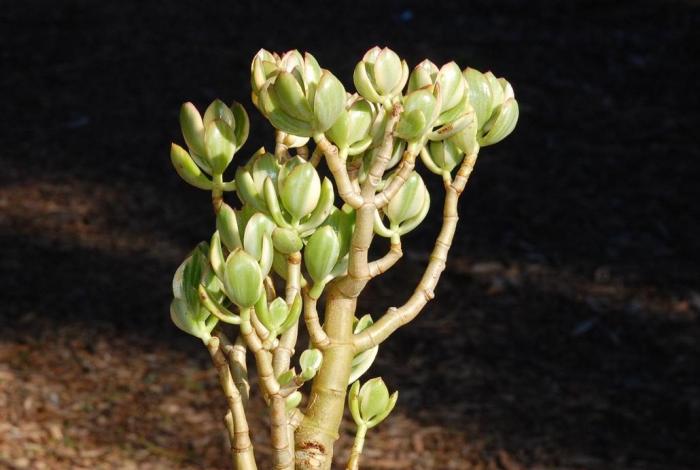Crassula ovata, commonly known as jade plant or money tree, is a popular succulent. It is known for its thick, fleshy leaves and tree-like appearance. This plant is cherished not only for its beauty but also for its ease of care. Understanding its light requirements is essential for healthy growth.
This article will explore the optimal light conditions for Crassula ovata. It will discuss the effects of different light levels, how to adjust lighting conditions, and signs of inadequate or excessive light.
Understanding Light Needs
Crassula ovata thrives in bright light conditions. It is a succulent that originates from South Africa. In its natural habitat, it receives plenty of sunlight. This plant has adapted to store water in its leaves. This adaptation allows it to withstand dry conditions. However, it still requires adequate light for photosynthesis.
Ideally, Crassula ovata should receive around 4 to 6 hours of bright, indirect sunlight each day. Direct sunlight can be beneficial in moderation but can cause damage if the intensity is too high.
Bright Light Conditions
Bright, indirect light is the best environment for Crassula ovata. This light condition can be found near a south-facing window. A spot that receives plenty of light but is shielded from the harsh afternoon sun is ideal.
When placed in bright light, Crassula ovata can grow vigorously. Its leaves will develop a vibrant green color. In some cases, they may take on a red or yellow tint. This color change is often a sign that the plant is receiving adequate light.
If you notice your jade plant stretching or becoming leggy, it may indicate insufficient light. In such cases, it is essential to move the plant closer to a light source.
Direct Sunlight Exposure
While Crassula ovata benefits from bright light, too much direct sunlight can cause damage. Prolonged exposure to harsh sunlight can lead to leaf burn. This condition manifests as brown, crispy patches on the leaves.
To prevent this, it is best to introduce your jade plant to direct sunlight gradually. Start with a few hours in the morning sun. This gentle approach will help the plant acclimate without causing stress.
In winter, jade plants can benefit from a few hours of direct sunlight. The lower sun angle means that the light is not as intense. This season can be a good time to place your plant in a sunny spot.
Low Light Conditions
Crassula ovata can tolerate lower light conditions, but this is not ideal for its growth. In low light, the plant may not thrive as well. Its growth may slow down, and the leaves may lose their vibrant color.
If your jade plant is kept in a dim area, consider moving it to a brighter location. If a brighter spot is not available, supplementing with artificial grow lights can be beneficial. These lights can mimic natural sunlight and help the plant photosynthesize effectively.
Artificial Lighting Options
Using artificial lights is a great option for indoor gardeners. LED grow lights are energy-efficient and effective for growing plants like Crassula ovata. When using artificial lights, place them about 12 to 24 inches above the plant.
It is crucial to give the plant a day and night cycle. Jade plants typically require 12 to 16 hours of light per day. A timer can help automate this process, ensuring your plant receives consistent light.
Seasonal Changes in Light
The light conditions can change with the seasons. In summer, the sun is more intense and can scorch your plant if it is not acclimated. During the summer months, monitor your plant closely. If you notice signs of stress, consider moving it to a location with filtered light.
In contrast, winter brings shorter days and less sunlight. During this time, your jade plant may need to be moved closer to a window to maximize light exposure.
Rotating the Plant
Rotating your Crassula ovata regularly can help it grow evenly. Plants often lean toward the light source, causing them to become lopsided. To prevent this, rotate your plant every few weeks.
This practice ensures that all sides of the plant receive equal light. This promotes balanced growth and keeps the plant looking full and healthy.
Signs of Inadequate Light
Understanding the signs of inadequate light is essential for maintaining the health of your jade plant. One common sign is leggy growth. If your plant appears tall and spindly, it is likely not receiving enough light.
Additionally, leaves may turn yellow and drop off. This drop can be alarming, but it often indicates that the plant is struggling to photosynthesize. If you notice these signs, consider moving the plant to a brighter location.
Signs of Excessive Light
Excessive light can also harm your Crassula ovata. As mentioned earlier, leaf burn is a common sign. Leaves may develop brown patches and appear crispy.
If you notice this issue, it is best to move the plant to a location with filtered light. This change will help prevent further damage and allow the plant to recover.
Another sign of excessive light is fading leaf color. If the vibrant green color begins to wash out, it may indicate that the plant is stressed from too much sunlight.
See also: How To Care Trailing Jade
Conclusion
Crassula ovata is a resilient plant that can adapt to various light conditions. However, providing the right light is crucial for its health and growth. Bright, indirect light is the ideal condition for this succulent.
Monitor your jade plant for signs of inadequate or excessive light. Adjust its location as needed to ensure it receives the proper amount of sunlight.
By understanding the light requirements of Crassula ovata, you can enjoy a thriving, beautiful plant in your home. With proper care, your jade plant can bring joy and beauty for many years.
Related topics:


